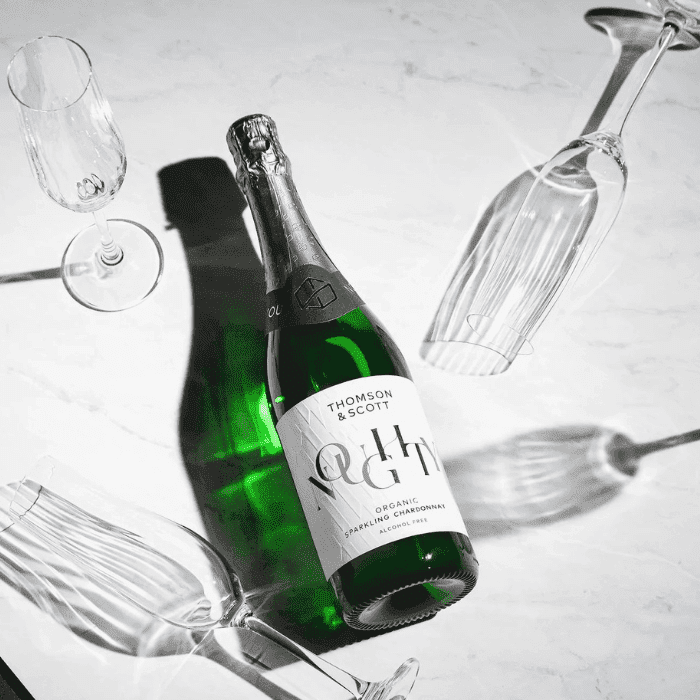When it comes to indulging in a glass of Chardonnay, the question on many minds is, how many calories in Chardonnay bottle? For someone who enjoys wine and has experienced the luscious aromas of this refined kind, I can see the interest in knowing how many calories it has. Chardonnay’s buttery aromas and sharp acidity have made it a popular wine option all around the world. But for those who are mindful of their calorie intake, the desire to know the precise impact of a bottle of Chardonnay is only natural. In this article, we will embark on a captivating journey to unravel the mystery of how many calories in Chardonnay bottle, diving into the intricacies and shedding light on this much-debated topic. So, grab a glass, and let’s embark on this enlightening exploration together!
How Many Calories are in a 750ml Bottle of Chardonnay?
How many calories in Chardonnay bottle? A typical 750ml bottle of Chardonnay contains approximately 600-700 calories. The calorie content can vary depending on factors. It’s important to be mindful of portion sizes for calorie management.
How Many Calories in a Glass of Chardonnay?
On average, a 5-ounce (148 ml) glass of Chardonnay contains about 120-130 calories. The calorie count may vary slightly depending on the specific brand and style of Chardonnay. It’s advisable to be mindful of your portion sizes for effective calorie management while savoring this delightful wine.
How Many Calories in Chardonnay Bottle: Different Types
When it comes to indulging in a bottle of Chardonnay, many wine enthusiasts often wonder about how many calories in Chardonnay bottle and how it varies across different types of this beloved varietal. At this point, we will explore the calories in many Chardonnay brands:
How many calories in a bottle of Kendall Jackson Chardonnay?
A bottle of Kendall Jackson Chardonnay typically contains around 650 calories. It’s important to note that this calorie count may vary slightly depending on the specific vintage and production techniques used by Kendall Jackson. Remember to enjoy this renowned Chardonnay in moderation to fully appreciate its flavors while being mindful of your calorie intake.
How many calories in a bottle of Josh Chardonnay?
The calorie content of a bottle of Josh Chardonnay can vary, but on average, it ranges between 600 and 700 calories. Josh Chardonnay is known for its vibrant fruit flavors and balanced acidity, making it a popular choice among wine enthusiasts. To savor this delightful Chardonnay responsibly, it’s recommended to be mindful of portion sizes and enjoy it in moderation.
How many calories in a bottle of J Lohr Chardonnay?
A bottle of J Lohr Chardonnay typically contains around 620 calories. However, it’s worth noting that the specific calorie content can vary slightly depending on the vintage and specific production techniques employed by J Lohr. When indulging in a bottle of J Lohr Chardonnay, remember to appreciate its characteristic flavors and aromas while keeping in mind the importance of responsible consumption.

How many calories in a bottle of Yellow Tail Chardonnay?
The calorie count in a bottle of Yellow Tail Chardonnay can range between 570 and 670 calories. Yellow Tail is known for producing approachable and fruit-forward wines, and their Chardonnay is no exception. As with any wine, it’s crucial to enjoy Yellow Tail Chardonnay in moderation to fully relish its lively flavors while being mindful of your overall calorie intake.
Calorie Count in Different Chardonnay Styles
When it comes to Chardonnay, the calorie count can vary depending on the style of the wine. Let’s explore the calorie differences in different Chardonnay styles:
Unoaked Chardonnay
Unoaked Chardonnay typically has a lower calorie content compared to its oaked counterparts. This style of Chardonnay showcases the natural flavors of the grape without the influence of oak aging. On average, a 5-ounce (148 ml) serving of unoaked Chardonnay contains approximately 120-130 calories.
Oak-aged Chardonnay
Oak-aged Chardonnay often undergoes fermentation and aging in oak barrels, which imparts additional flavors and complexity to the wine. The oak aging process can contribute to a slightly higher calorie content. A 5-ounce (148 ml) serving of oak-aged Chardonnay typically ranges between 130-150 calories.
Sparkling Chardonnay
Sparkling Chardonnay, such as Champagne or other sparkling wine made from Chardonnay grapes, can vary in calorie content. The calorie count generally aligns with that of regular Chardonnay styles. A standard 5-ounce (148 ml) serving of sparkling Chardonnay usually contains approximately 120-150 calories.

Factors Affecting How Many Calories in a Bottle of Chardonnay Wine
The calorie content in a bottle of Chardonnay wine can be influenced by several factors. Understanding these factors can provide insight into the calorie count. Here are key factors that affect how many calories are in a bottle:
- Alcohol content: Higher alcohol content generally leads to a higher calorie count in Chardonnay. Alcohol contributes significantly to the overall calorie content of the wine.
- Residual sugar: Chardonnay can vary in terms of residual sugar, which is the natural grape sugars that remain after fermentation. Wines with higher residual sugar tend to have more calories compared to drier styles.
- Winemaking techniques: Different winemaking techniques, such as malolactic fermentation and barrel aging, can impact the calorie count. For example, wines that undergo malolactic fermentation may have a slightly higher calorie content.
- Harvest conditions: The ripeness of the grapes at harvest can affect sugar levels and subsequently impact the calorie count. Riper grapes tend to have higher sugar content, potentially leading to more calories in the wine.
- Serving size: The amount of Chardonnay consumed plays a significant role in the overall calorie intake. Pay attention to the serving size to accurately gauge the calories consumed.
It’s essential to note that the specific calorie count in a bottle of Chardonnay can vary based on the winery, vintage, and individual production choices. While enjoying Chardonnay, it’s recommended to savor it in moderation and be mindful of the overall calorie intake for a balanced lifestyle.
Other Nutritional Values of a Glass of Chardonnay
Here is a table showcasing the other nutritional values of a 5 fl oz (147 g) serving of Chardonnay:
| Nutritional Value | Amount Per Serving | % Daily Value* |
|---|---|---|
| Total Fat | 0 g | 0% |
| Sodium | 7 mg | 0% |
| Potassium | 104 mg | 2% |
| Total Carbohydrate | 3.2 g | 1% |
| Dietary Fiber | 0 g | 0% |
| Sugar | 1.4 g | |
| Protein | 0.1 g |
For those who want to know how many carbs in a glass of Chardonnay? A glass of Chardonnay typically contains approximately 3.2 grams of total carbohydrates per 5 fl oz (147 g) serving.
How Many Calories in a Bottle Of White Wine Chardonnay Vs. Other Wines
| Wine Variety | Calories in 750ml Bottle |
| White Wine Chardonnay | 600-700 calories |
| Sauvignon Blanc | 600 calories |
| Pinot Grigio | 623 calories |
| Cabernet Sauvignon | 600 calories |
Where Do the Calories in Chardonnay Come from?
The calories in Chardonnay primarily come from two main sources: alcohol and sugar.
Alcohol
Chardonnay, like other wines, contains alcohol, which contributes significantly to its calorie content. Alcohol contains 7 calories per gram, making it a dense source of calories. The alcohol content in Chardonnay can vary, but it typically ranges between 11% and 14%. The higher the alcohol content, the more calories the wine will have.
Sugar
Chardonnay grapes naturally contain sugars, which are converted into alcohol during the fermentation process. However, some residual sugar may remain in the finished wine, especially in off-dry or slightly sweet Chardonnay styles. The sugar content in Chardonnay can vary depending on the winemaker’s preferences and the level of dryness desired. Sugar contributes additional calories to the overall count.
It’s worth noting that the calorie count in Chardonnay can also be influenced by factors such as winemaking techniques, oak aging, and residual carbon dioxide (in sparkling Chardonnay).
Understanding the sources of calories in Chardonnay can help individuals make informed choices and manage their overall calorie intake when enjoying this delightful wine.

Will Chardonnay Make You Gain Weight?
Whether Chardonnay, or any alcoholic beverage for that matter, will contribute to weight gain depends on various factors, including overall calorie intake, lifestyle, and moderation in consumption.
Chardonnay, like other wines, contains calories derived from alcohol and, to a lesser extent, sugar. Regularly consuming excessive amounts of Chardonnay or any alcoholic beverage can contribute to weight gain due to the additional calorie intake. Additionally, alcohol can potentially stimulate appetite and lead to overeating or poor food choices, which can further contribute to weight gain.
However, moderate consumption of Chardonnay as part of a balanced lifestyle is unlikely to cause significant weight gain. Moderate drinking is generally defined as up to one drink per day for women and up to two drinks per day for men.
Tips for Calorie Reduction Strategies for Wine Lovers
For wine lovers who are conscious of their calorie intake, there are several strategies to reduce calories while still enjoying their favorite beverage. Here are some tips for calorie reduction:
- Dilution with sparkling water or soda water: Mix your wine with sparkling water or soda water to create a refreshing spritzer. This lowers the overall alcohol and calorie content per serving while still providing a flavorful drink.
- Use ice cubes or frozen fruit: Add ice cubes or frozen fruit like berries or grapes to your wine. This can help dilute the wine and make it last longer, allowing you to sip and savor without consuming as many calories per glass.
- Choose lower-alcohol options: Opt for wines with lower alcohol content, as alcohol contributes significantly to the calorie count. Look for Chardonnays with alcohol levels closer to 11-12% instead of higher-alcohol varieties, which can have more calories per serving.
- Practice portion control: Be mindful of your serving sizes. Use a smaller wine glass or measure your pour to stick to a standard serving size, which is typically 5 ounces (148 ml). Enjoying wine in moderation and savoring each sip can help manage calorie intake.
- Explore lighter wine styles: Consider trying lighter-bodied white wine options like Sauvignon Blanc or Pinot Grigio, which generally have fewer calories compared to richer and more full-bodied wines.
- Stay hydrated: Drink water alongside your wine to stay hydrated and help pace your drinking. It can also help reduce the overall amount of wine consumed.
Remember, while these strategies can help reduce calorie intake, it’s important to find a balance and enjoy wine in moderation. Additionally, individual calorie needs may vary, so it’s always a good idea to consult with a healthcare professional or registered dietitian for personalized advice.

How to Pair Food with Chardonnay When Counting Calories
Pairing food with Chardonnay while counting calories can be a delightful way to enhance your dining experience. Here are some tips to help you make calorie-conscious food choices when enjoying Chardonnay:
- Choose lean proteins: Opt for lean protein sources like grilled chicken, fish, or shrimp. These protein options are generally lower in calories and can complement the flavors of Chardonnay.
- Incorporate vegetables: Fill your plate with a variety of fresh, roasted, or steamed vegetables. Vegetables are typically low in calories and can add texture and vibrant flavors that pair well with Chardonnay.
- Embrace salads: Create a refreshing salad with leafy greens, colorful vegetables, and a light dressing. Consider adding ingredients like grilled vegetables, goat cheese, or sliced almonds for added flavor and texture.
- Explore seafood dishes: Chardonnay pairs beautifully with seafood. Opt for grilled or baked fish, shellfish, or seafood salads. Avoid heavy sauces or butter-based preparations to keep the calorie count in check.
- Mindful cheese choices: If you’re including cheese in your pairing, opt for lighter options like goat cheese or feta, which have fewer calories compared to richer, aged cheeses. Enjoy them in moderation and pair with whole-grain crackers or sliced apples for added texture and flavor.
- Be mindful of portion sizes: Even when choosing calorie-conscious food options, portion control is essential. Enjoy your meals in moderation and savor the flavors of each bite to fully appreciate the pairing experience.
FAQs
Is Chardonnay wine high in sugar?
Chardonnay can vary in sugar content depending on the winemaker’s preference and desired style. However, compared to sweet dessert wines, Chardonnay is generally considered a dry wine with relatively low sugar content.
Can you drink Chardonnay and still lose weight?
Weight loss depends on overall calorie balance. While Chardonnay can be enjoyed in moderation as part of a balanced diet, it’s important to be mindful of portion sizes and consider the calorie content of the wine within your daily intake to support weight loss goals.
Is Chardonnay a low sugar wine?
Chardonnay is generally considered a low sugar wine compared to sweeter wine varieties. However, it’s always advisable to check the specific wine label or consult the producer’s website for more precise information on sugar content.
Are there any low-calorie Chardonnay options available?
Yes, some wineries offer low-calorie Chardonnay options, which typically have reduced alcohol and sugar content. These wines can be a good choice for those looking to manage their calorie intake while enjoying Chardonnay.
Can Chardonnay be part of a balanced diet?
Yes, Chardonnay can be part of a balanced diet when consumed in moderation and as part of an overall well-rounded eating plan. It’s important to consider the calorie content and make mindful choices to maintain balance.
Is white wine OK on low carb diet?
White wines, including Chardonnay, are generally lower in carbohydrates compared to beer or sweeter wines. While they can be enjoyed in moderation on a low-carb diet, it’s important to consider the total carb intake from all sources.
Can I drink a whole bottle of Chardonnay?
Drinking a whole bottle of Chardonnay in one sitting is not recommended due to the high alcohol and calorie content. Moderation is key when consuming any alcoholic beverage.
Does the serving temperature of Chardonnay affect its calorie count?
No, the serving temperature of Chardonnay does not affect its calorie count. The calorie content remains the same regardless of temperature.
Are there any non-alcoholic or low-alcohol Chardonnay alternatives available?
Yes, there are non-alcoholic and low-alcohol Chardonnay alternatives available in the market. These options provide a way to enjoy the flavors of Chardonnay with reduced alcohol content.
What has more calories Chardonnay or beer?
Chardonnay generally has more calories compared to light beers. However, the calorie count can vary depending on the specific brand and style of both the Chardonnay and beer.
Conclusion
In conclusion, understanding how many calories in Chardonnay bottle is crucial for those who wish to make informed choices about their wine consumption. Having personally explored this topic, I’ve come to appreciate the significant variations in calorie counts among different Chardonnay styles and brands. By considering factors such as alcohol content, residual sugar, and winemaking techniques, individuals can gain a better understanding of the calories they consume. Portion control, label interpretation, and mindful pairing can also contribute to a healthier approach to enjoying Chardonnay. While it’s important to be mindful of calorie intake, it’s equally important to savor the unique flavors and potential health benefits that Chardonnay can offer. So, if you indulge in a glass of Chardonnay next time, take a moment to appreciate the intricate balance of flavors, all while being mindful of the calories it brings to your overall lifestyle.
I’m Chen Mina, from Vol de Nuit, who has a special passion for bartending, especially mixing wine, beer, and cooktail. Here you will find content about alcoholic beverages, I will bring you knowledge that few people know about this drink.





